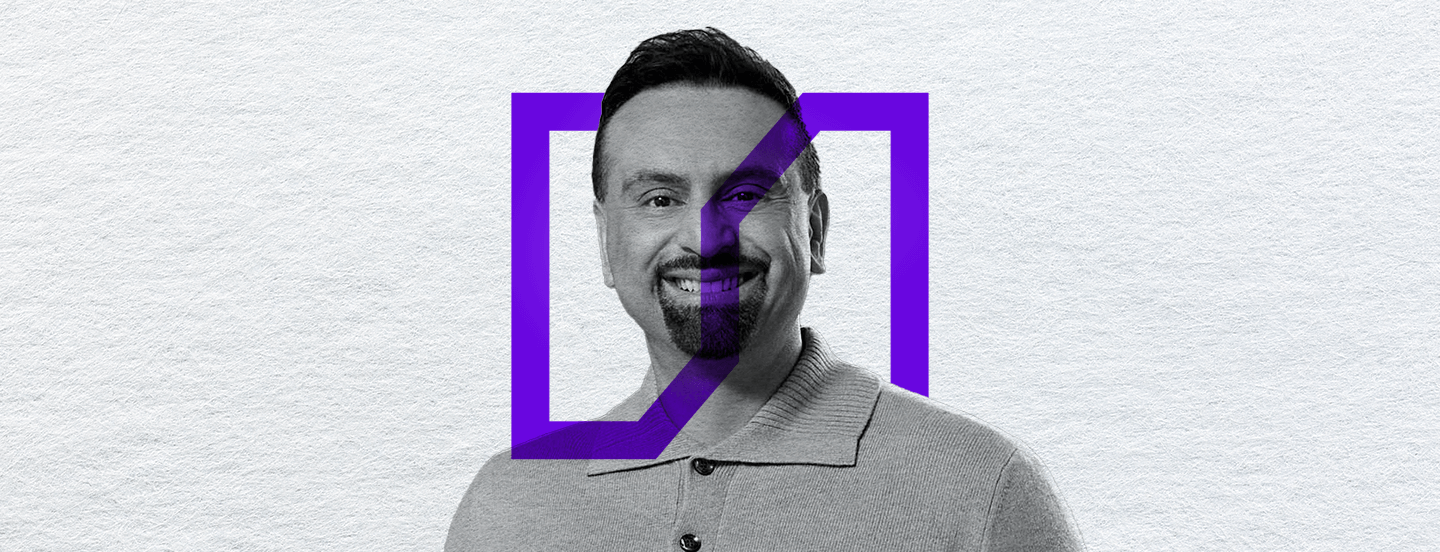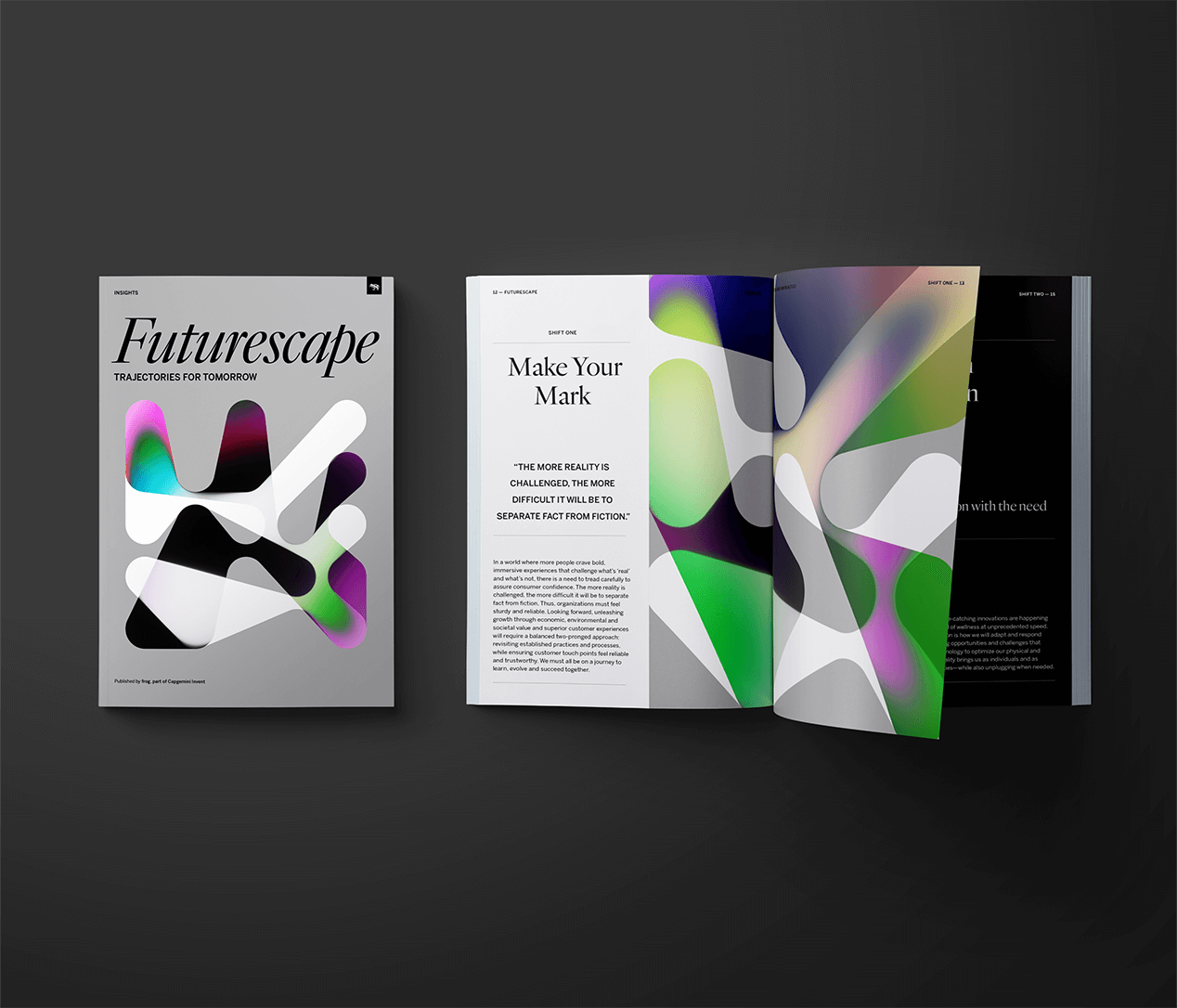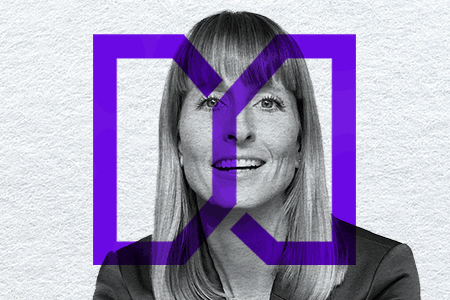
Design Mind frogcast Ep.45 – Futurescape: Trajectories for Tomorrow
On this episode of the Design Mind frogcast, we are once again visiting a place we at frog call the ‘Futurescape.’ As the subject of a new report from frog called ‘Futurescape: Trajectories for Tomorrow,’ we’re going deeper into the trends and movements impacting the way we live and work today. To do this, we’re excited to be joined by frog Managing Director Gagandeep Gadri.
Listen to the podcast episode below. You can also find the Design Mind frogcast on Apple Podcasts, Spotify and anywhere you listen to podcasts.
Episode Transcript:
Design Mind frogcast
Episode 45: Futurescape: Trajectories for Tomorrow
Guest: Gagandeep Gadri, Managing Director, frog
[00:09] Elizabeth Wood: Welcome to the Design Mind frogcast. Each episode, we go behind the scenes to meet the people designing what’s next in the world of products, services and experiences, both here at frog and far, far outside the pond. I’m Elizabeth Wood.
[00:25] Elizabeth Wood: Today on our show, we’re once again visiting a place that we at frog like to call the ‘Futurescape.’ The Futurescape is a place where reality is challenged everyday by the evolution of AI-powered creations, making it harder and harder to believe what we’re seeing. It’s a place where the devices we use to track our health and measure our sense of wellness are the very same devices we need to turn off every once in a while for our own good. It’s a place where our relationship with change is constantly shifting on cultural, business and environmental levels. Of course, it’s also the subject of frog’s latest report ‘Futurescape: Trajectories for Tomorrow.’ You can find a link in today’s show notes to read the report in full, and we encourage you to do so. But first, to give you a sense of what’s in store, we’re joined by none other than frog Managing Director Gagandeep Gadri. Recording from frog’s London studio, we asked him to provide an overview of the five key shifts we explore in the report, and share his insights on why the future is so important to keep in view, a bit of background into his relationship with assessing what’s next and his own unlikely inspiration for navigating change. Here’s Gagandeep now.
[01:33] Gagandeep Gadri: So look, we’re at a big tipping point where the work we do and how we do it is going to change because of technology, AI, but also shifting to be a more inclusive and planet-positive society. So I’d love to play a big role in shaping this new future. I’m super excited about it. I’m intrigued. I’m also open and hopeful about it. And I think you have to be. The reason is that the one constant in our life, in this world, is change. There always has been and always will be change. And so we have to embrace it.
[02:06] Gagandeep Gadri: Hi, my name’s Gagandeep. I’m the Managing Director of frog. So frog is part of the Capgemini Group, and I call myself a ‘Capgemini Pureblood’ because I finished my degree on the Thursday, I started to work at Capgemini on the Monday, and I’ve been here 27 years. One of the other milestones is all the great people at frog, Capgemini, and the clients like IKEA and L’Oréal I’ve worked with. You know, one of the other obviously biggest milestones is my family, my wonderful wife and three kids.
[02:32] Elizabeth Wood: During our conversation, Gagandeep shared more background about frog’s role within Capgemini Invent, and what explorations into the future involve now that we’re at a critical crossroads in what Capgemini calls the ‘Eco-Digital Era (TM).’
[02:46] Gagandeep Gadri: So, frog is part of Capgemini Invent. It’s the reinvention and experience partner driving impact in the Eco-Digital Era (TM). What do I mean by that? So one, how do we unleash growth through new products and services and experiences, but then deliver that growth by creating those superior customer experiences? And when we talk about growth, what we mean is how do we deliver outcomes, which drive not just economic value, but societal and environmental value as well? And we believe that means driving a dual transition to create a more digital and sustainable world. That’s what we call the Eco-Digital-Era (TM) . You know, you can download the report we’ve created on the Eco-Digital Era (TM) from the Capgemini website, and there’ll be a link in the notes as well for the show, too.
[03:35] Gagandeep Gadri: At frog we believe strategy is a creative act. You know, strategy is about making choices. A good strategy creates good choices, but a modern strategy generates new ones, making space for radical ideas. And you know, never has this been more important than now to create new choices and take forward radical ideas.
[03:56] Gagandeep Gadri: How do you make decisions in this new world and the future, within a context of rapid change consumer behavior, environment, societal, economic growth as well? In this report, we’ve whittled all of that down to five shifts that we think will impact life and work moving forward. You know, it’s a complex time. So, when we look at these shifts, we’re looking at them from two possible directions, reflecting duality of interpretations and examining the inherent friction underlying today’s trends and movements. Throughout we’ve included prompts and provocations to help readers decide how they can make their mark going forward.
[04:37] Elizabeth Wood: As Gagandeep shares, the Futurescape report intentionally goes beyond annual ‘trends’ type of thinking. It’s not about what’s hot in tech, the latest aesthetics or fads, or any kind of limited view of what matters for the next twelve months or so. It’s about possible ways our world can be shaped for years to come, and our role as consumers, creatives and citizens in realizing these visions.
[05:01] Gagandeep Gadri: Futurescape is how we look at the trajectories for tomorrow. You know, it’s frog’s guide to choose the right path forward, not just for organizations, but for all people and planet as well. This has been a real labor of love, and it showcases the brilliant talent in our team. We came up with a three-part process. The first one is scan: scanning all of the brains of all of the people that we have around the world in different industries or different functions to understand what trends they see affecting them not just at work, but how they live their lives. This edition is a collective effort of 12,000 Capgemini Invent consultants of which frog is part of that.
[05:30] Gagandeep Gadri: The second part of this was focus: how do we down select all of that into the most interesting ideas? And we’ve picked five seismic shifts, which we see affecting us, and are in this report. And the final part, which I’m really excited about now is activation, right? And that’s, how do we get people excited about the report? Reading it but also starting a two-way conversation about what do you think about these shifts? Is there something missing? Is there something you want to add to them?
[06:10] Elizabeth Wood: Because the report covers quite a bit of ground with wide-ranging implications, Gagandeep offered up some advice for how to approach it—and who best stands to benefit from reading it.
[06:20] Gagandeep Gadri: Well, firstly, I want to say it’s an encouragement for everyone to just step back from the day to day to reflect and assess what’s out there. What do we need to think about? How do we shape the future? Given that context, we want people to take that provocation forward by challenging their own status quo and turning bold ideas into action. So therefore, it’s open to everyone really, in all levels in an organization in the academic world, young people out there who just want to learn more. And most importantly, it is about starting a conversation. We want to hear your responses to Futurescape. Share your ideas on what you think is coming next? And what we’ll do in the future is share a selection of those. And you never know, we might have another podcast about the reaction and discussion that this report has generated.
[07:12] Gagandeep Gadri: So, you know what, in today’s episode, what I’d love to do is take the opportunity to share with our listeners, to whet their appetite a little bit about the selection of my favorite insights and details and big questions from this report. Hopefully, this will make everyone want to check the report out in full, which it’s free to access and again, the link will be in the show notes. So, let’s go.

[07:36] Elizabeth Wood: The first shift outlined in the report is titled ‘Digital Fictions Bend New Realities.’ From deepfakes to digital recreations of the ancient past, this shift raises questions about what happens when our sense of reality can come into question at nearly every turn and how emerging technology might be able to protect us from losing our connection to the past.
[07:59] Gagandeep Gadri: So shift number one, ‘Digital Fictions Bend New Realities.’ So let me give you an overview of this shift. This shift delves into how technology can preserve the wonders of our world that already exist, but also create new forms of wonder that will make us stop and think. Within the shift, we took two extreme directions. The first one is ‘Protect Perspectives.’ This is all about exploring how embracing next-generation technology can be the key to preserving our cultural heritage. The second direction is about suspending all belief. It’s looking at how digital clones, chatbots and avatars are making it harder than ever to believe our eyes.
[08:41] Gagandeep Gadri: An example of this we see in action is an organization called the Royal Commission for Al-Ula In Saudi Arabia. They can take virtual guests through the metaverse to explore UNESCO World Heritage Sites. So by doing this, it’s a good example of protecting a perspective. So using technology to see what the world was like thousands of years ago, but at the same time, we can suspend all belief as you can be sat at home, wearing a sophisticated headset, which allows you to step into this digitally created world.
[09:14] Elizabeth Wood: Within the sub-direction of protecting perspectives, one example explored in the Futurescape report is around our cultural connection to language. Already, anthropologists and linguists are finding use in exploring technology to preserve records of languages that are at risk of being lost over time. This reflects the juxtaposition of needing to quickly engage with new future-forward tech, while also keeping one foot in the past that brought us to this point.
[09:40] Gagandeep Gadri: A good way to think about this is you know by 2100 The United Nations estimates that between 50 to 95% of the world’s approximate 7000 languages that currently exist will be extinct or seriously endangered. So what’s the answer? How can we embrace next-generation technology to preserve some of our cultural heritage?
[10:04] Gagandeep Gadri: Currently, we’re using a lot of the primarily English or European languages to train the natural language processing systems. So we need to expand that data set and include more diversity. I think that’s a key thing we need to watch out for. And you know, we’re already seeing some of that in practice, like in Brazil, where the ‘Linguistic Assistant’ app is helping the Guarani Indigenous people write in their spoken language of Guarani Mbaya as opposed to defaulting or writing in Portuguese. And I think this is really key when I go back to, you know, we don’t want to just deliver economic value, but also environmental and societal value.
[10:44] Gagandeep Gadri: Collectively, I think we need to ask ourselves: With novelty abounding, how can technology be used for purpose, protection and fun? Looking forward, delivering superior customer experiences are going to require a two-pronged approach. We need to revisit established practices and processes while ensuring new customer touch points feel established, and really importantly, trustworthy. It’s going to be a journey where I think we all need to learn, evolve—and that way we’ll succeed together.
[11:15] Elizabeth Wood: The second shift in the report explores the rapid state of innovation in the health sector thanks to new technology—from a higher than ever development velocity in the lab to the sheer volume of new medical research being published today. On a personal consumer level, increasingly, we use apps to track what we eat, how we sleep, how many steps we take and everything in between. We are essentially becoming walking datapoints that promise more insight into how we can improve our overall state of being. Yet, there are also risks in relying too much on devices and digital services for information about our personal wellness. For example, who among us hasn’t used Dr. Google to research some ailment and walked away from the experience a bit terrified of possible outcomes before meeting with an actual expert? Here’s Gagandeep to share more about the fine line between a sense of magic and the potential madness that comes with deploying new tech in the health and wellness space.
[12:11] Gagandeep Gadri: So shift number two is ‘Technology as Both Cure and Condition.’ This shift is all about looking at how we’re using technology to improve our wellness, both at speed, but also making sure there’s some magic as well. So we’ve got two shifts that we’re looking at, two directions. The first one is ‘Return to Magic Mode,’ which actually is saying: How can we have some time away from devices, and how that can allow our wellness to be better? The second aspect is the ‘Miracle Speed’ at which we can use technology and wellness innovations, such as biohacking or synthetic biology to help empower us all.
[12:52] Gagandeep Gadri: We see a massive rise of AR headsets and holographic screens and the increased expectation that technology can perform the trick of becoming invisible. The wellness app sector is forecast to reach an annual revenue of 10 billion by 2030, but also there’s a rapid development and speed in biohacking or synthetic biology, to look at how we empower wellness innovations as well. But notwithstanding all of this, there’s increased discussion that having time away from your device is good for your wellbeing and mental health. We’re also hearing a lot about, you know, not giving young children devices at an early stage of their life. So, it’s how do we marry all of these things together?
[13:35] Elizabeth Wood: Finding the right balance goes back to focusing on what people really need from their technology, which in some cases, as in that of pain management or insights gathering, might require total immersion. But, in other cases, it will mean being able to use next-level devices to keep us in the moment, and of course, free us to unplug completely when it matters most. For Gagandeep, leaders of organizations have a key role to play in navigating this balance responsibly.
[14:04] Gagandeep Gadri: So one of the things we looked at are the new generation of devices that can also pull a strong emotional impact. These have been long overdue devices such as Apple Vision Pro, and wearable AI powered assistants, such as Humane or Ray Ban Meta, which are identified at unlocking tech, but also having the ability to enhance reality and making that stronger human connection.
[14:28] Gagandeep Gadri: It’s good for us all to be thinking: How can we balance wellness innovation and the need to unplug from all of this technology at the same time? So I think there are different ways organizations are going to need to approach and play with health and wellness. Organizations will need to explore new approaches to using data and devices and breakthrough medicine, which help us keep well and accelerate recovery, but are also allowing us space and time away from some of this technology, too. Leaders are going to need to think about what’s really true innovation or where do we need to strip back to something basic as well. And I think this all goes back to a way in which we need to continuously reinvent experiences and products in an open and transparent way to evolve and build trust with consumers.
[15:17] Elizabeth Wood: The third shift outlined in frog’s Futurescape report again focuses on the role of AI in our personal and professional lives. It asks: in what ways do human creativity and machine intelligence go hand-in-digital hand?
[15:33] Gagandeep Gadri: So we’re now at shift three. And this is all about ‘Humanizing AI and Mechanizing Humanity.’ So what do we mean by this? This shift questions how AI developments are intrinsically linked with our own human evolution. And I think that’s a great connection to make. So we looked at two directions here. The first one is ‘Expand Human Touch.’ If AI can augment everything, then will human to human interactions become the ultimate luxury? And the second part is ‘Embrace the Glitch.’ So this is exploring if computers make mistakes, could that be a new route for humans to discover new and unconventional solutions?
[16:13] Gagandeep Gadri: So a bit more around this…for decades there’s been promises of artificial intelligence, you know, we’ve seen it in science fiction. But today, the new AI-powered innovations are really helping humanity write the story of tomorrow in real time. You know, businesses are increasingly looking at ways responsibly to incorporate this technology into what they do.
[16:34] Gagandeep Gadri: We recently did some research through our Capgemini Research Institute, where we produced a report on the future of marketing. We spoke to 1400 executives from around the world, marketing executives, and 76% of them said their organizations are planning to allocate budget towards GenAI-based marketing initiatives. But what’s really key in this is not just the technology or the data, but the underlying ethics behind this. What are the skills they need in the business? But also what’s the role of human creativity as well?
[17:08] Elizabeth Wood: So, AI-created ‘hallucinations’ might provide unconventional directions for exploring new ideas and the democratization of AI capabilities might accelerate the creative process. Yet, Gagandeep shares some of the risks that come from an over-reliance on AI on an ethical and intellectual property level, but also when it comes to engaging your audience in a meaningful, lasting way.
[17:33] Gagandeep Gadri: So there’s a lot of studies, and I was reading a study this morning as well, which is telling us that humans are negatively biased against AI-created art. And one of the reasons for this is a belief that there’s a lot of value, intrinsic value, linked to the process of creating art, but also the human experience it took to create it. It’s fascinating. So an interesting question then comes is whether and why people might prefer human- compared to AI-created art. This could mean that a sense of luxury and exclusivity could be assigned to art and design products that are actually made by humans rather than AI. It’s interesting to ponder how human creativity and AI-enabled creativity will work together. For example, is there a role in AI in scaling and personalizing human creativity, whereas maybe the original ideas or creation in the first place is human-based?
[18:28] Elizabeth Wood: Of course, no matter how far we are able to advance the tech underlying generative AI, ultimately, the Futurescape report recommends a healthy relationship with the technology that doesn’t replace human-first creative processes entirely.
[18:44] Gagandeep Gadri: It’s critical to remember that when we harness the full potential of the technology here that we don’t over rely on the automation of things, but remember, they’ll always be a need for human touch. You know, there’s a common saying that, “AI won’t take your job, but someone who knows how to use AI might.” So I think this speed in this area of change can be quite overwhelming. But those willing to tap into the power and potential of the technology may ultimately feel the value and potential for human evolution to progress alongside it.
[19:17] Elizabeth Wood: The fourth shift in the report focuses on global responses to the climate crisis. Over the next two decades, the World Health Organization warns that the 3.6 billion people currently living in areas highly susceptible to climate change are likely to see hazards ranging from the spread of disease to a lack of access to clean air, food and water. With stakes at an all-time high, it’s no wonder why it’s easy to feel overwhelmed by the potential risks of not curbing our environmental impact. From governmental policy to personal actions, this shift explores new solutions to this ongoing problem affecting us all.
[19:55] Gagandeep Gadri: Shift four: ‘Emerging Solutions to the Sustainability Imperative.’ So this shift, explore strategies set to lead us to a brighter tomorrow. And within the shift, we explore two directions: the first one ‘Reduce Impact–Or Else’ is looking at the new ways regulations will ensure innovative answers to the climate crisis, becoming widely embraced. And the second part is ‘Redefine Green,’ really considers an elevated approach to sustainability is on the horizon, matching the rising cultural value we’re all putting to it. So the context behind this, you know, the landscape of sustainability shifting fast. Behaviors once considered fringe are becoming normalized. You know, we all know about it, but now we want to do it. That’s why solutions are really imperative. You know, climate regulations are reshaping and actually making organizations have to deliver and create sustainable products and services. Within the EU’s Corporate Sustainability Reporting Directive, it states that 50,000 companies are now subjected to new climate-focused regulations, which they’re going to need to deliver against.
[21:08] Elizabeth Wood: Of course, top-down governmental policy isn’t the only response to the climate crisis. From individual actions to community-wide changes and initiatives from visionary business leaders, Gagandeep shares how we all have a role to play in contributing positively toward climate action.
[21:26] Gagandeep Gadri: One area ripe for innovation is the growing energy grid decentralization movement. So the viability of off-grid solar and wind energy for small players. It’s dramatically changing the way we’re leveraging the technology here. Developing economies in the Global South are already leading the way. You know, there’s a ‘silent revolution’ in Johannesburg around this. Another big topic is on consumption. You know, when we’re working with organizations or organizations are thinking about new products or services, you know, they need to ask themselves, do we really need this? If we produce this, which ones will we stop producing? Or, how can we reuse? You know, you hear a lot about circular economy, we now need to make it real. And this goes back to our belief that we’re in this Eco-Digital Era (TM). And we need to deliver outcomes that drive economic, environmental and societal value.
[22:18] Gagandeep Gadri: So, look it’s a real time now for us to ask: Are we ready for the new tools and approaches that will support widespread sustainable behaviors? Yes, regulations are coming into effect, but it shouldn’t just be regulations. It needs to be a combination with consumers who want this behavior change. And all leaders really understanding from the board level that you have to do this from product creation, change management and supporting consumers’ changing habits.
[22:49] Elizabeth Wood: Finally, the fifth shift in the Futurescape report explores fundamentally just how comfortable we as a people are with the very notion of change, and the possible responses we might see in the ways we live, work and play.
[23:04] Gagandeep Gadri: The final shift and this really underpins all of the other ones, is about our changing relationship with change. So what do we mean? You know, I think we’re exploring here the billion dollar question: How do we deliver in an ever shifting and increasingly varied cultural landscape? And within this, we looked at two directions. You know, a really interesting one: is it now time to ‘Turn Back to Tradition?’ To look at some ways we used to deliver things in a more simple way as is that the way for us to move forward?
[23:37] Gagandeep Gadri: The second part is ‘Welcome to the Vibe Shift’ in how do we explore our desire, but also resistance to move forward at speed? Look, we’re all reeling from COVID-19 disruption, right? Technology is continuing to change the way we think and the climate, macro economic, other kind of societal shifts as well. Against all of this backdrop, can they really be a lasting new normal? Is that possible? Or are we forever going to live in a flux? And if that’s the case, how do we deliver all of this change? You know, with all of this tech at our fingertips as well and convenience, people around the world are looking for a reconnection to more of the natural and spiritual, sensory type of living we used to have before. So how do we deliver against that?
[24:25] Elizabeth Wood: Wrestling with the pull of personal convenience and the satisfaction that comes from communal practices is nothing new. But in a world where delivery is practically instant and ready-made everything is everywhere, Gagandeep shares more about how this tension is playing out in our daily lives.
[24:44] Gagandeep Gadri: So really interesting one is about food, you know, and food beyond the individual. We’re seeing more and more communities forming shared emphasis on acting responsibly and a rejection of the new. You know, people have meal replacement shakes or ready made meals, but they’re also looking to find a more communal eating practice within their communities, growing their own food than sharing the food. So again, a really good example of where we’re turning back to tradition, but with the vibe shift that’s about eating together with the people who live around your community.
[25:21] Gagandeep Gadri: Now’s the time for leaders to really ask themselves how they can deliver valuable offerings in an ever-shifting and increasingly varied cultural landscape. You know, the key to success here is for leaders to get in tune with this changing landscape, maybe be a bit vulnerable and open about this, and showing how they’re learning and developing, adjusting to the consumer behaviors and expectations whilst they’re ever evolving.
[25:48] Elizabeth Wood: Speaking of evolution, Gagandeep shares one icon of change that inspires the way he navigates a world that is in a constant state of flux.
[25:59] Gagandeep Gadri: Look, we’re bombarded with so much information and inspiration, but an unlikely source for me is Madonna. She has been a huge influence in all my life. And what I really respect about her is the creativity, the way she’s been relevant. But she’s also adapted to society and how we’re changing but stayed true to her values.
[26:22] Elizabeth Wood: Throughout the process of creating this Futurescape report, from reaching out to 12,000 Capgemini Invent colleagues for inspiration, to stitching themes together to create the narrative and exploring the visual direction, Gagandeep shares one learning that overrides all the rest.
[26:40] Gagandeep Gadri: I learned that the collective visions of all of my colleagues is super impressive. You know, reviewing all of the work, submissions the way we crafted this report. It’s been such a rich journey. And I just want to say thanks again, to everyone who’s been involved, all of the outstanding ideas that have led to the creation of this report. I really hope all the listeners here will download the report because I think it’s a great way to get some inspiration, provocation and just some time and space to reflect.
[27:10] Elizabeth Wood: That’s our show. The Design Mind frogcast was brought to you by frog, a leading global creative consultancy that is part of Capgemini Invent. Check today’s show notes for transcripts and more from our conversation.
[27:23] Elizabeth Wood: We really want to thank Gagandeep Gadri, Managing Director of frog, for joining us on this episode, as well as for being so involved in shaping this report from start to finish. ‘Futurescape: Trajectories for Tomorrow’ is available in the show notes, and it would not be possible without the thousands of strategists, designers, consultants, technologists, writers and all around creative people from across frog and Capgemini Invent who informed it as well as the brilliant global team who brought it all together. As Gagandeep mentioned, we’d really love to hear what you think about the report, so feel free to reach out on LinkedIn, X, Instagram or our website’s contact page.
[28:01] Elizabeth Wood: We also want to thank you, dear listener. If you like what you heard, tell your friends. Rate and review to help others find us on Apple Podcasts and Spotify . And be sure to follow us wherever you listen to podcasts. Find lots more to think about from our global frog team at frog.co/designmind. That’s frog.co. Follow frog on Twitter at @frogdesign and @frog_design on Instagram. And if you have any thoughts about the show, we’d love to hear from you. Reach out at frog.co/contact. Thanks for listening. Now go make your mark.

Gagandeep is an Executive Vice President and is the Managing Director of frog globally and the Head of frog in the United Kingdom. A future focused senior leader commanding 25 years of experience gained driving innovation, growth and delivering customer experience and digital projects across global brands. Above all, a bold innovator with the capacity to evoke positive change felt at both a human and organisational level.

Elizabeth tells design stories for frog. She first joined the New York studio in 2011, working on multidisciplinary teams to design award-winning products and services. Today, Elizabeth works out of the London studio on the global frog marketing team, leading editorial content.
She has written and edited hundreds of articles about design and technology, and has given talks on the role of content in a weird, digital world. Her work has been published in The Content Strategist, UNDO-Ordinary magazine and the book Alone Together: Tales of Sisterhood and Solitude in Latin America (Bogotá International Press).
Previously, Elizabeth was Communications Manager for UN OCHA’s Centre for Humanitarian Data in The Hague. She is a graduate of the Master’s Programme for Creative Writing at Birkbeck College, University of London.

We respect your privacy
We use Cookies to improve your experience on our website. They help us to improve site performance, present you relevant advertising and enable you to share content in social media. You may accept all Cookies, or choose to manage them individually. You can change your settings at any time by clicking Cookie Settings available in the footer of every page. For more information related to the Cookies, please visit our Cookie Policy.
Our Studios





